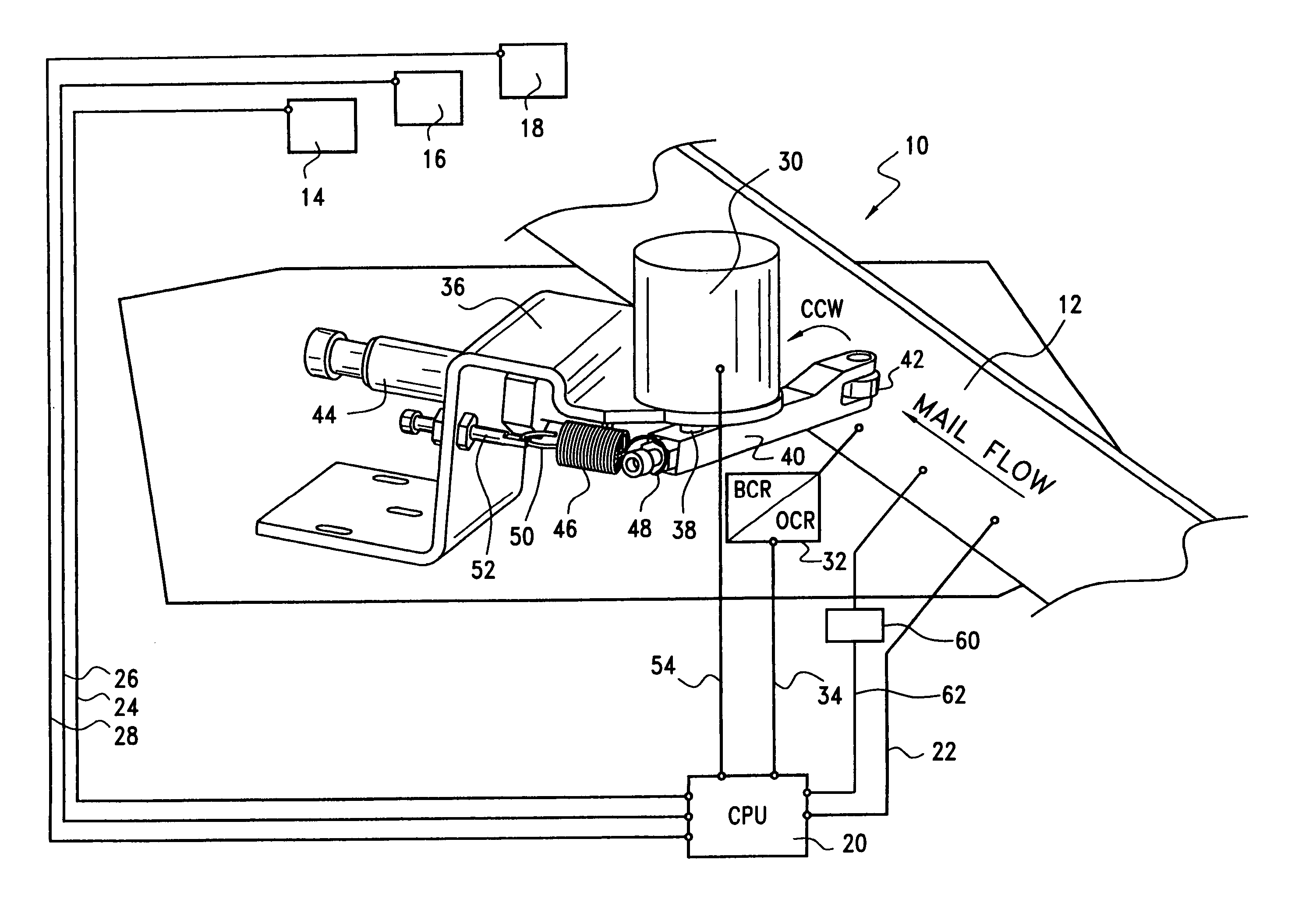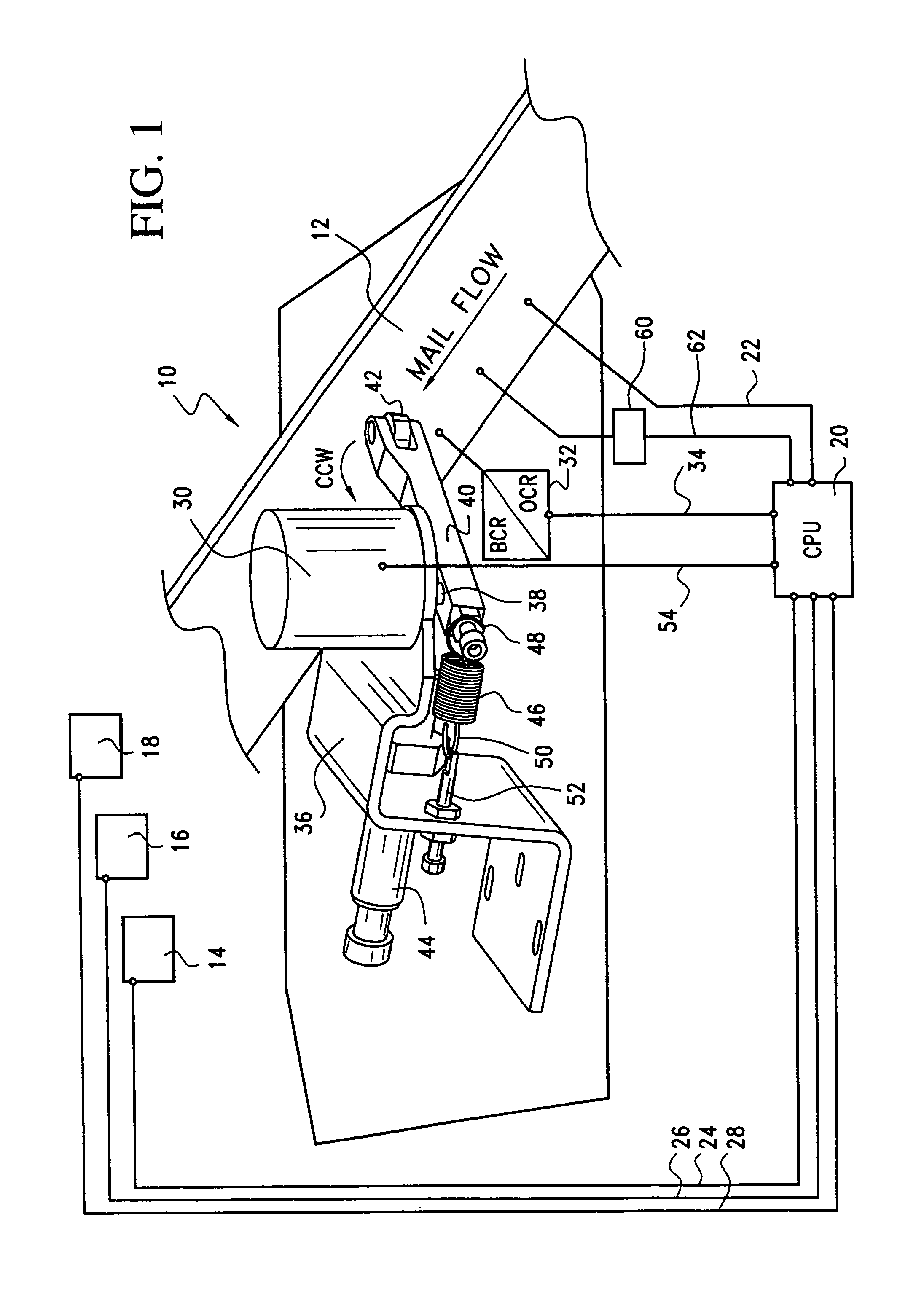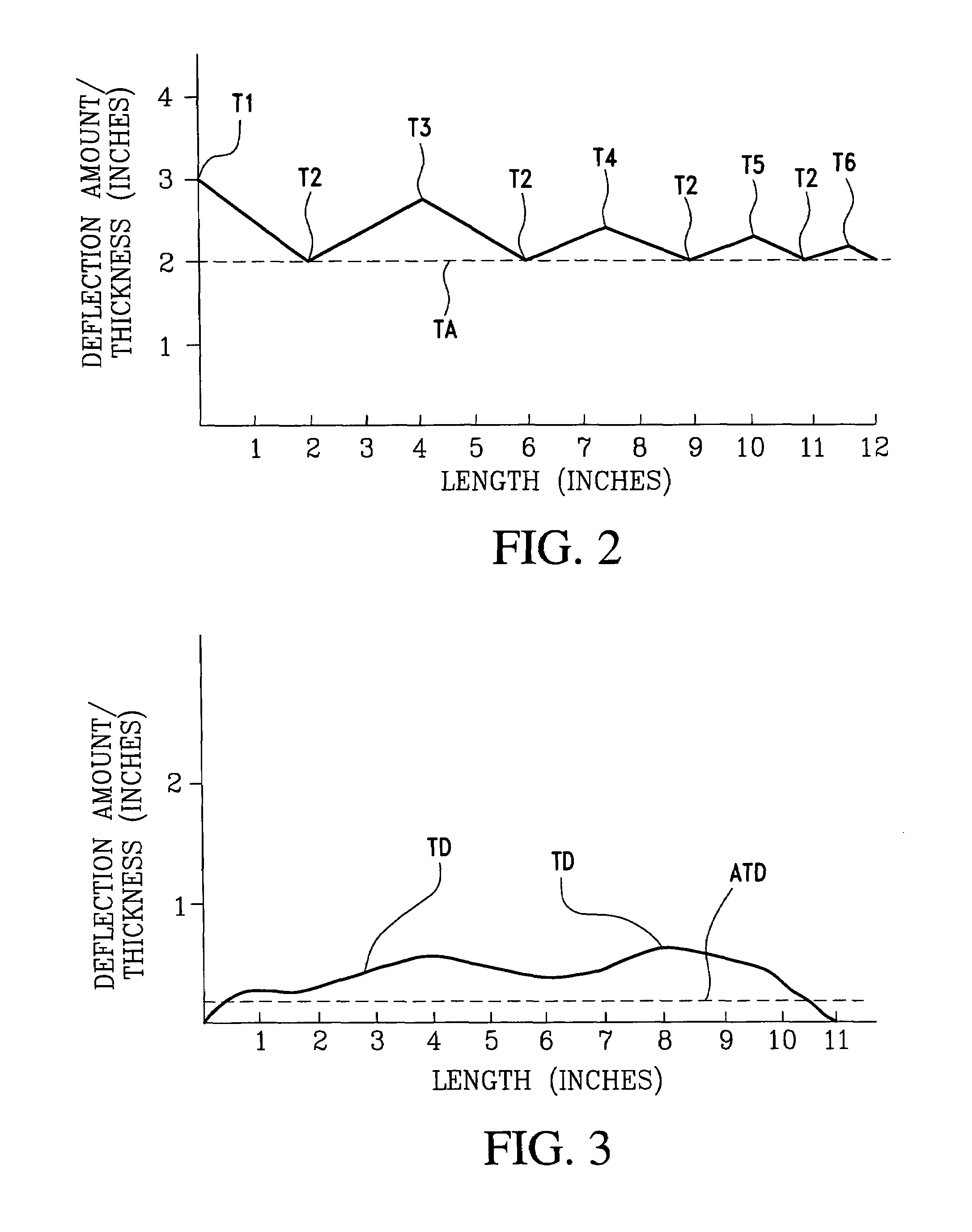Thickness measuring system, having improved software, for use within a mail handling system, and method of using same
a technology of thickness measurement and mail handling system, which is applied in the direction of thin material processing, instruments, sorting, etc., can solve the problems of system failure to accurately determine the thickness of each individual piece or unit of mail and subsequently correlate such information, and the type of system is relatively expensiv
- Summary
- Abstract
- Description
- Claims
- Application Information
AI Technical Summary
Benefits of technology
Problems solved by technology
Method used
Image
Examples
Embodiment Construction
[0020]Referring now to the drawings, and more particularly to FIG. 1 thereof, a new and improved article handling system, having a new and improved thickness measuring device incorporated therein, is disclosed and is generally indicated by the reference character 10. While the article handling system 10 can be adapted for use in connection with the handling or conveyance of substantially different types of articles, for the purposes of the present invention disclosure, the article handling system 10 will be directed toward the handling and conveyance of pieces or units of mail which may, for example, include, but is not necessarily limited to, envelopes, letters, catalogs, newspapers, greeting cards, magazines, telephone directories, and the like. More particularly, it is seen that the new and improved article handling system 10 comprises an article conveyor system as defined by means of a pair of opposed conveyor belts 12 between which articles, such as, for example, various pieces...
PUM
 Login to View More
Login to View More Abstract
Description
Claims
Application Information
 Login to View More
Login to View More - R&D
- Intellectual Property
- Life Sciences
- Materials
- Tech Scout
- Unparalleled Data Quality
- Higher Quality Content
- 60% Fewer Hallucinations
Browse by: Latest US Patents, China's latest patents, Technical Efficacy Thesaurus, Application Domain, Technology Topic, Popular Technical Reports.
© 2025 PatSnap. All rights reserved.Legal|Privacy policy|Modern Slavery Act Transparency Statement|Sitemap|About US| Contact US: help@patsnap.com



